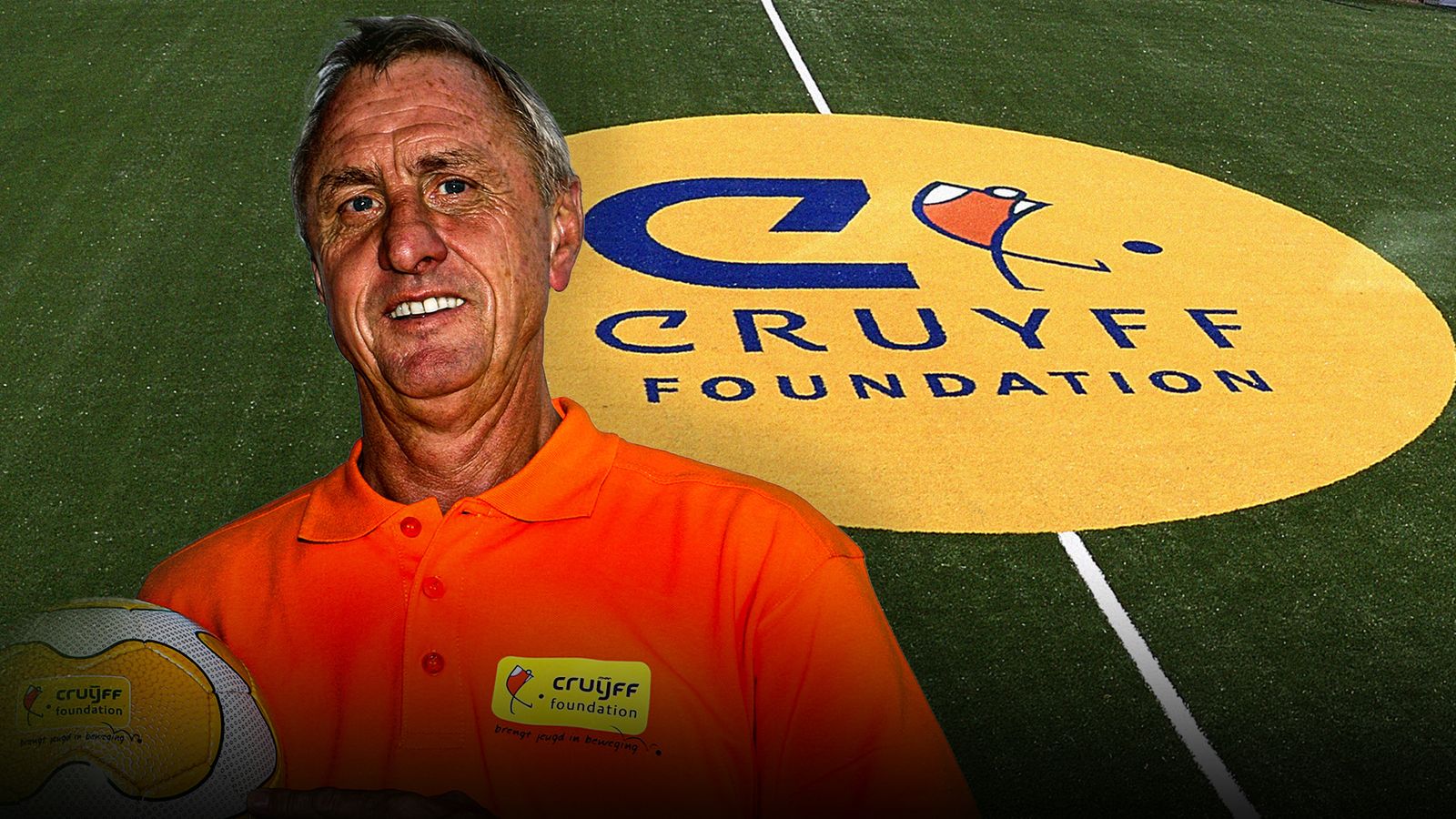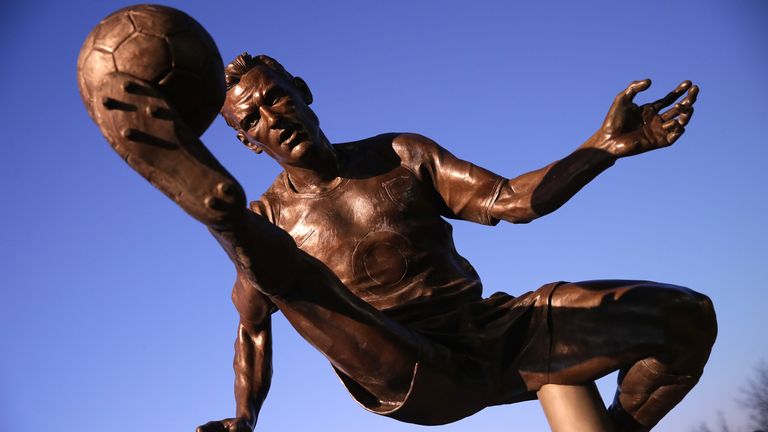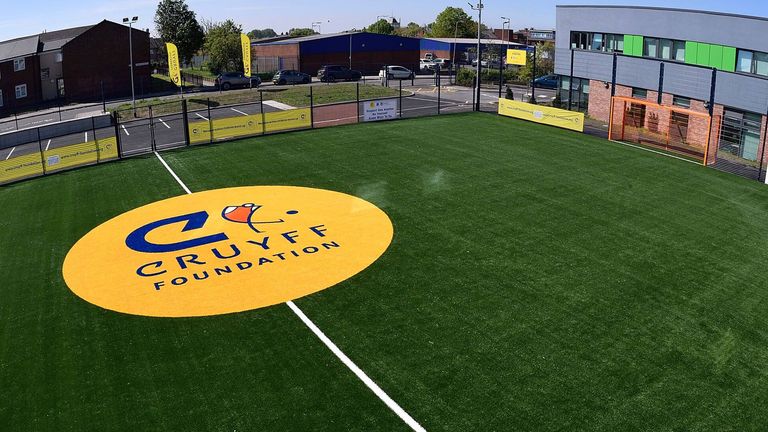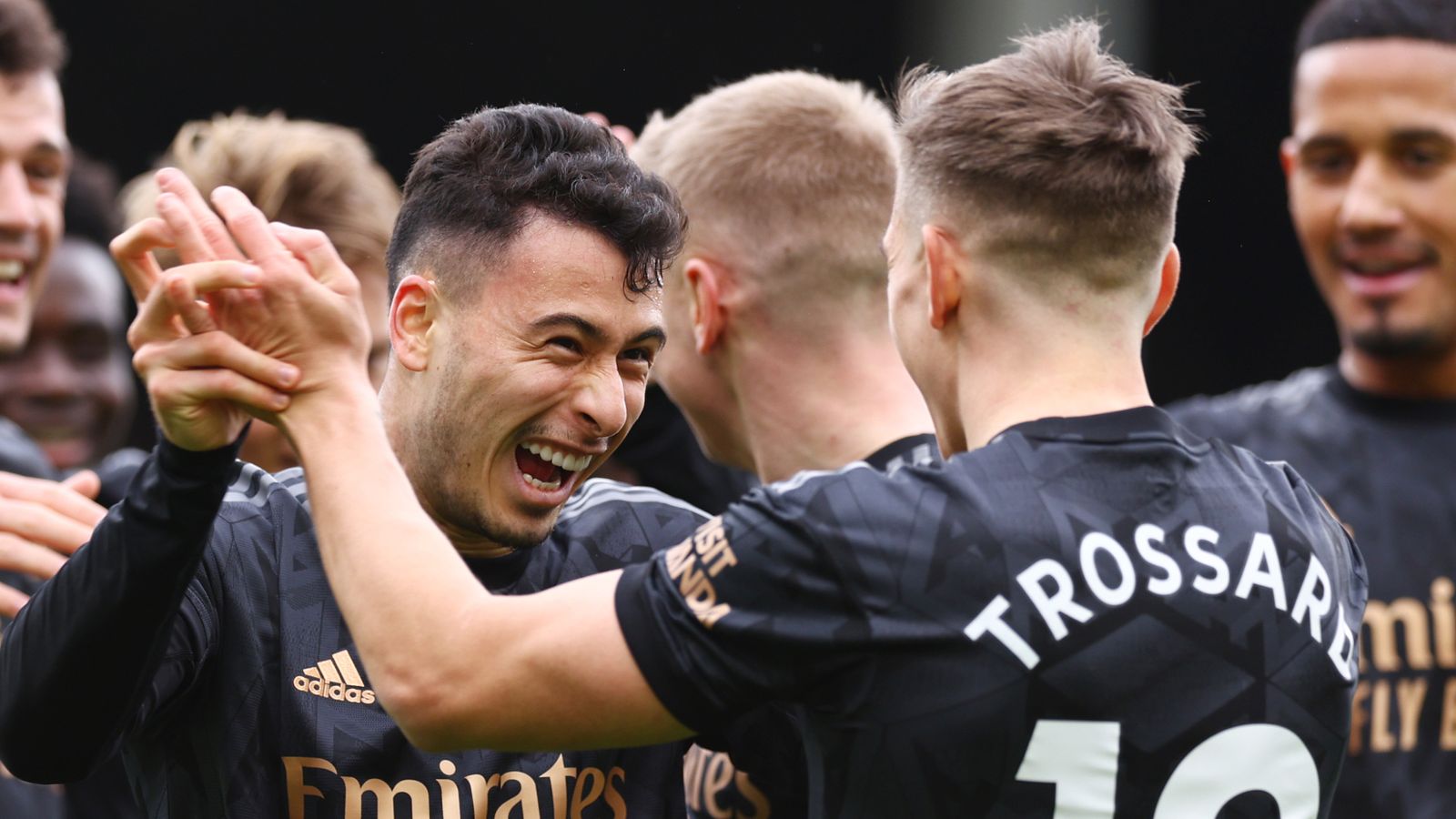Johan Cruyff’s legacy at Arsenal: How the Dennis Bergkamp Cruyff Court is helping to create opportunities for communities | Football News
Go in search of Johan Cruyff’s influence and it is not hard to find. At Ajax, where the stadium is now named after him, he helped to implement Total Football. At Barcelona, as player and coach, he is perhaps the central figure in the club’s entire identity.
An inspiration to former Barcelona midfielder Pep Guardiola, the man who has led Manchester City to four of the last five Premier League titles, Cruyff’s legacy continues to be felt. Much more than a great player, his ideas are still shaping how the game is played.
And yet, as his son Jordi explains, this influence runs even deeper, a legacy that goes beyond the glory of the game. “There is another part that is sometimes more silent. The part of helping children, trying through sport to help them feel part of society.”
On a cold night in Islington, as the floodlights are switched on, lighting up the aesthetic turf in this part of north London, another group of youngsters prepare to play on the Cruyff Court here. It was opened in 2008, named after Arsenal hero Dennis Bergkamp.
Arsenal in the Community had a presence even before that but the Cruyff Court has transformed this space. It was funded with money from Bergkamp’s testimonial and help from Islington Council. Thanks to Arsenal and the Premier League, the football is free.
“These sorts of safe spaces are really valuable for young people,” says Jack Ironside, Arsenal’s senior manager for social inclusion. “They have all sorts of physical benefits and in terms of the mental health benefits for the wider community, it is really important.”
This is not about discovering the next Bergkamp who could help Arsenal win a Premier League title. Some of the children have real talent but the focus is not on finding a superstar. “We are looking at social outcomes as much as sporting outcomes,” says Ironside.
“Increases in youth employment, reductions in anti-social behaviour and providing young people with positive opportunities. So there are tangible benefits to it in terms of courses, qualifications and employment but it is also about those softer skills.
“These are life lessons for young people. How do you be a good team player? How do you win? How do you lose? How do you accept that? What does that mean? Respecting one other. Making good decisions. All of these good life skills but doing it through sport.”
Jely Kikamba’s journey is an example of the power of the work that is being done. “The first time I laid eyes on this place was 2009,” he says, surveying the scene. He was just a boy then. “A lot of kids would come here. This is like the heart of the estate.”
He was inspired to get involved. “The reason why I even took it up was because of the fact that the older boys in the area were also coaches at the time. I was already looking up to them anyway but they were doing something positive as well.”
Now it is Kikamba himself who is doing the coaching. “The benefits of coaching the kids is that you are a little superstar to their eyes, you understand? They look up to you and you start to understand how much more you can bring to the community.
“It is all about the environment, just using football as a medium to get people out of certain situations, keeping them out of trouble.
“My hopes are to build as many possible opportunities for the youth coming here. Whatever they want to do, whether that is being a footballer, going into media. Bringing them here shows them that the world is a lot bigger. There is more you can do out here.
“We need more spaces like these around.
“We need more coaches like me that are out in the community, working the programmes, helping the young people. If we bring more eyes to it, more people will be inclined to think, I am going to bring my kids to it, I want to be a coach, I want to invest my time into it.”
‘They made me think it was possible’
Sanchez Ramgeet is one of the young coaches following in his footsteps. Still only a teenager, his decision to join the sessions at the Cruyff Court has already led to a job with Arsenal. It is more than he thought was possible when he first began playing here.
There was no grand plan, just an opportunity.
“Arsenal were here so straight away I signed up and got involved. I had no thought of becoming a coach, working on match-days.”
Now, his coaching work is just part of his responsibilities.
“I also work at the Emirates Stadium, setting up the stadium on match-days. I also work alongside the match-day team walking around with our mascot Gunnersaurus.”
He is grateful to mentors like Kikamba for showing him what could happen. “They were the ones who made me think, ‘Maybe it is possible.'” Now he is inspiring others. “From where I have come from to where I am now, I am coaching them when I was in their position.”
For Ironside, this is the template.
“We have got a really strong pathway of participants graduating to become the workforce itself. A really local, community-focused workforce that understand the young people they are working with. Mostly because they were in very similar situations themselves.
“Having those local leaders sends a really strong message to the other young people coming through the programme.
“Having Johan Cruyff’s name and Dennis Bergkamp’s name on it is great. They are legends of the game. But what this means to the community goes beyond football actually.”
And that is just how Cruyff himself would have wanted it.
That silent part that is still making a difference.
Ronald Koeman lifted the European Cup for Cruyff’s Barcelona in 1992, scoring the winning goal in the final at Wembley. He is an ambassador for the Cruyff Foundation and has gone on to open Cruyff Courts everywhere from Liverpool to Johannesburg.
“The legacy of Johan Cruyff is even more important than it was before,” says Koeman.
“That legacy is about smiling, it is about doing things together.”
Under the lights in London, that legacy is alive and well.






